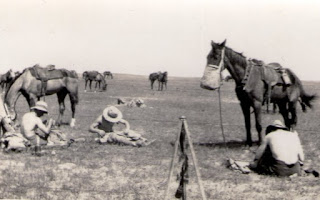The
planks for the clinkers and carvels are fitted, removed and shaped with chisels, then softened
to enable them to be moulded to the curvature of the lighter from bow to stern.
This is done by enclosing each plank into a steamer - a metal
box with an attachment through which
an engine pumps steam onto the plank. The wood softens as the steam heats the fibres. After several hours the plank is removed and again fitted to the hull, moulded and clamped to the frame. Once cooled and the shape is assured it is again removed and undercoat is applied to each plank before
it is finally attached to the frame, glued, hammered and clamped into place.
The steamer is located in the yard outside.
One or two planks are placed inside.
The engine is checked and turned on...
to send boiling water to the steamer through an attachment on the top.
Steam slowly rises from the steamer ...
...and builds in volume as the hours pass.
The softened plank is then carried inside ...
... and again fitted to the lighter. Note the steam rising from the wood.
After fitting and cooling the plank is again removed ...
...
and undercoat is applied to each piece prior to final placement.
Regular posts on the building of the lighter will be uploaded to this blog.


















































